A review of “Epitomes,” an exhibition by Yumiko Ono, on view at Museum of Contemporary Art (MOCA) in Taipei through 2 February 2020.
Tucked into a corner of the first floor of the MOCA building, away from the catastrophes represented in the main show, Yumiko Ono’s Epitomes offers us subtle, yet vital reflections on our urban structures, and the cultures and natures that form them.
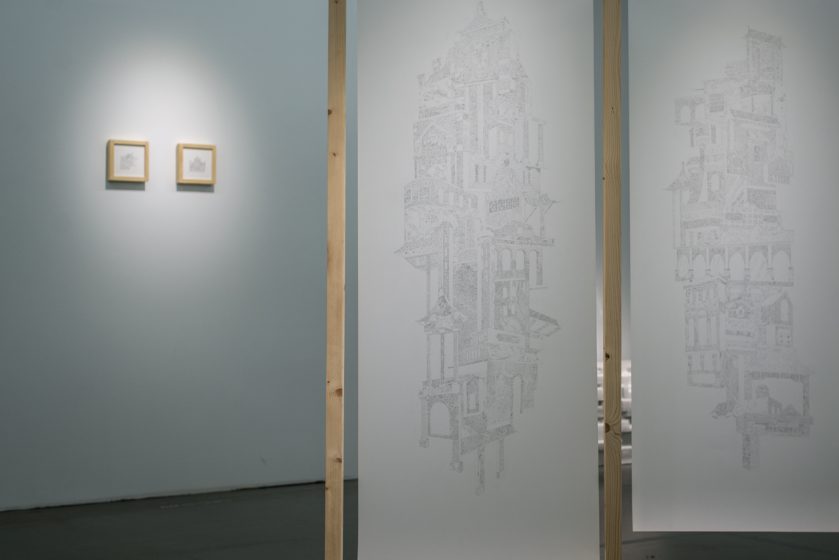
The central works of Ono’s exhibition are her Cloud City series. These simply presented works of pencil on tracing paper are unassuming at first glance, however in both their content and context, they stand out as some of the most deeply moving pieces in the museum.
Within Ono’s drawings, varied architectural elements from Taiwan are pieced together in pleasantly delirious sequence. From afar, they appear truly as a floating cloud cities, urban worlds suspended in space with no roots, cities as inverted caves, spires poking out top and bottom, stalactite, stalagmite.
The works come across like a marriage of Escher’s etchings and the words of Calvino’s Invisible Cities.
These Cloud Cities of Ono’s are not simply a hodgepodge of architectural forms. The matter of the buildings tells the tale of the environment. On close inspection, wall faces here reveal subtle natural motifs. These motifs seem to offer suggestions of Taiwan’s leaves, rivers, winds, mountains, and waters, coalescing to form the walls. Interestingly, the motifs Ono chooses seem to act not as murals on the walls, but as the walls themselves.
There is no solidity to these cities of Ono’s. Instead there are ever-changing cycles — patterns of nature, framed in the architectural styles and structures of humanity.
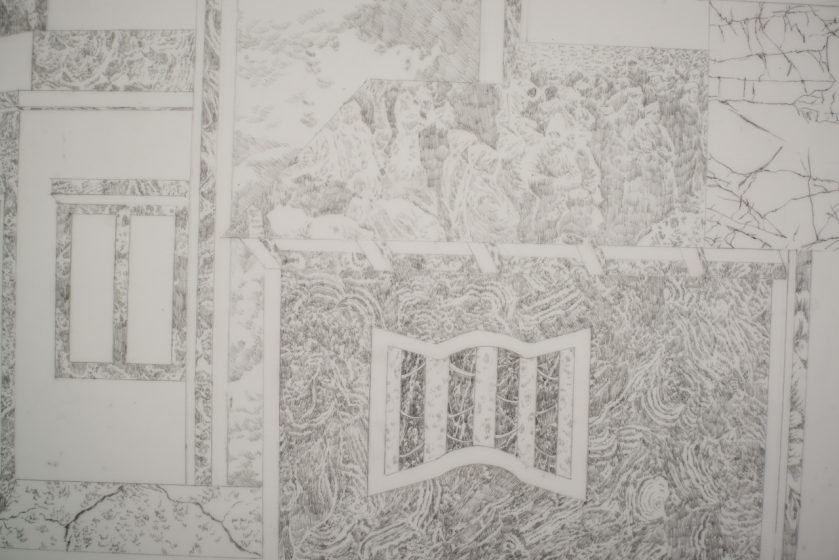
Not antagonistic of city versus nature, Ono’s drawings come across like peaceful meetings between two forces that we so often see as opposites. Here, city and nature create form together.
Also on view in this exhibition are Ono’s Pan-City 10 porcelain sculptures, products of the artist’s experience living in Russia and the United States, among brutalist architecture.
Ono’s shiny, urbanesque objects give a softness and lightness to typical brutalist form, appearing something like blocks of white butter, stacked atop each other on a summer afternoon. Their weight is made cunningly visible by Ono, as the blocky sculptures seem to slope and cave inward. One might imagine these sculptures as representations of human logic, utilitarian apartment blocks and office buildings given form, and then melting into lumpy puddles of toilet-bowl-white sameness.
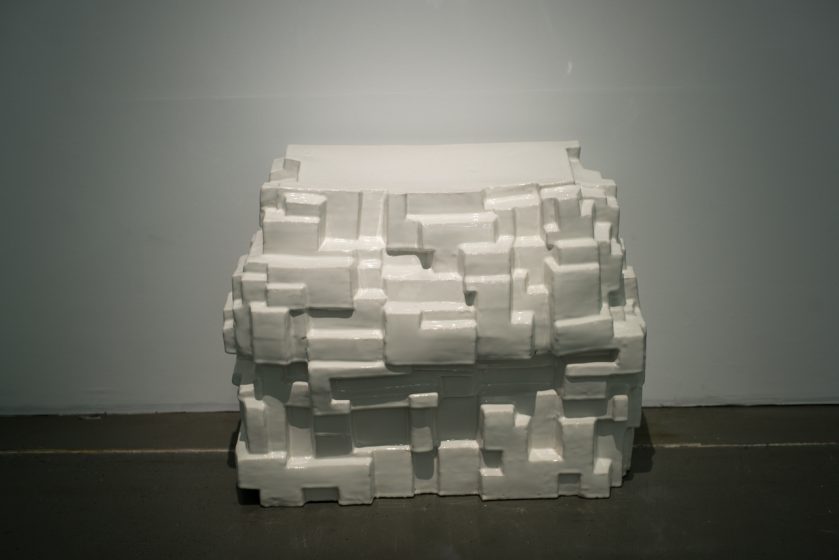
The porcelain works—bleak, characterless visions of cities as structures of anthropocentricism—are powerful, yet here they seem purposefully outwitted here by the quietly incisive power of Ono’s simple pencil drawings.
In simplicity of material, the delicate drawings offer a vision of cities as a melding of human ingenuity with nature’s rhythms. Within each drawing, one can find the cycle of life and death as a city, floating in space, along with the clouds.
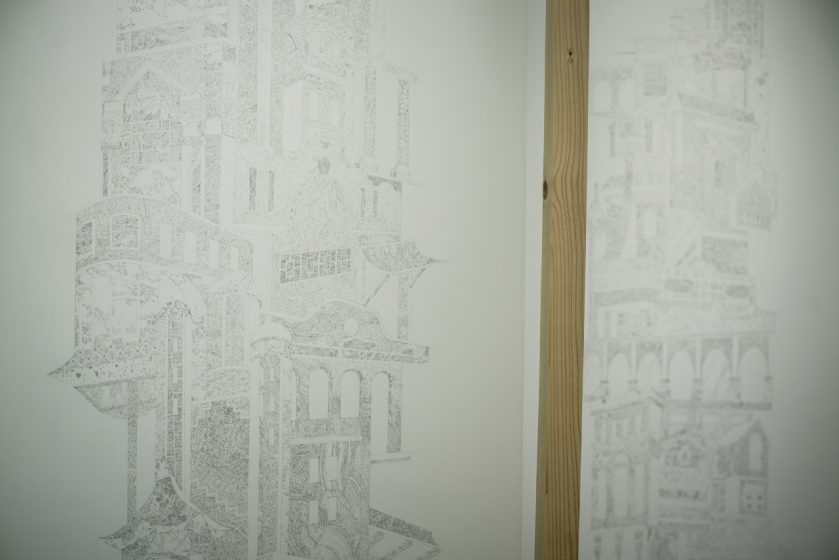
The juxtaposition of the porcelain sculptures with the pencil drawings in the same space is a good thing. If one provides form and fluidity, the other gives character and context. If one offers subtle critique of the gross, the other offers subtle idolization of the sublime.
It reminds one of the strong Taoist influences here Taiwan, and of the saying by the ancient philosopher Chuang Tzu, that “One who wants to have right without wrong, order without disorder, does not understand the principles of nature … to refuse one is to refuse both.”
Ono reminds us here, not only that there is merit to both sides, but that to follow nature in a city means to accept both the hard and the soft, the solid and the flowing, the growing and the decaying, all in their turn.
As any truly resilient city knows, all forms have their roles.
Patrick Lydon
Osaka

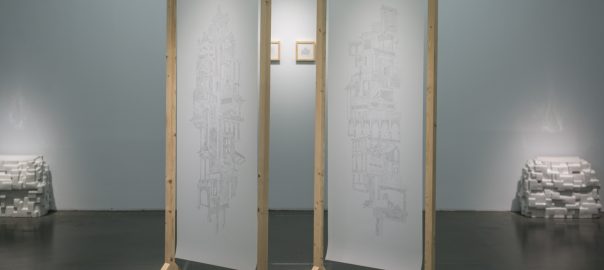







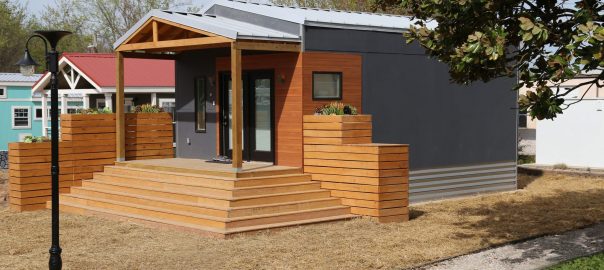

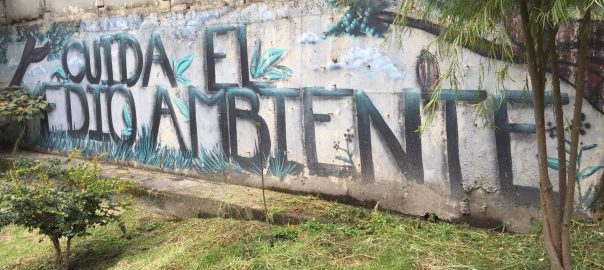
Add a Comment
Join our conversation